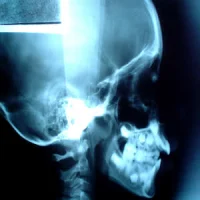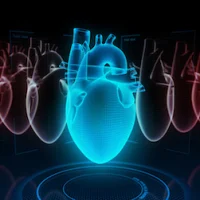EuroSafe Imaging celebrated 5 years of success in it’s mission to support and strengthen medical radiation protection across Europe following a holistic, inclusive approach with a dedicated series of sessions, activities and events during this year’s European Congress of Radiology.
The flagship initiative created by the European Society of Radiology promotes quality and safety in medical imaging. EuroSafe Imaging has a mission to support and strengthen medical radiation protection across Europe. At ECR2019, EuroSafe Imaging welcomed visitors at it’s open lounge offering souvenir photos, hosted the EuroSafe Imaging poster exhibition with a record of over 120 submissions from experts around the world and held scientific sessions, coffee and talk gatherings and Voice of EPOS sessions.
The EuroSafe Imaging track at ECR2019 included sessions:
“Artificial intelligence and radiation protection”
Professor Guy Frija in his chairperson’s introduction stated that artificial intelligence (AI) is a vehicle for improving patient outcomes, and thus it will change the practice of radiology in the next few years. In his presentation he provided an overview of how AI can enhance radiation protection in medical imaging.
AI will be a method of demonstrating the clinical value of radiology and will allow for faster and more accurate image assessment and hence diagnosis. AI will also support the training of radiologists, improve clinical knowledge, and contribute to research in medical imaging. Furthermore, AI could have knock-on impacts on radiation protection by reducing the incidence of unnecessary procedures, reducing the doses administered, increasing the image quality, and improving patient safety in general. The transformative potential of AI for the radiology profession cannot be ignored: rather practitioners must be prepared to embrace it.
“Hybrid imaging: the best of both worlds”
Professor Markus Zeilinger , Fachhochschule Wiener Neustadt, Austrian Network for Higher Education, talked about the establishment of highly sensitive molecular imaging techniques, in combination with the synthesis of novel radiolabelled bioactive molecules for the visualisation and quantification of numerous specific (patho) physiological processes and biochemical targets, merged the fields of molecular imaging and personalised medicine.
In this context, PET belongs the most sensitive imaging modality with an excellent molecular sensitivity, capable of providing high temporal resolution for kinetic analysis of biochemical phenomena and molecular processes. The combination of a dedicated PET with a CT modality, as a morphological imaging technique, has the potential to provide essential, comprehensive information and to increase the scope of application for modern molecular imaging.
Professor Sharon Robinson from the University of Manchester highlighted that with many interventions no longer only open surgery but a combination of open and endovascular or purely endovascular, a hybrid endovascular theatre is recommended. Hybrid theatres combine access for safe open surgery with the ability to perform high quality rotational fluoroscopic imaging. As lead Interventional Radiographer at a busy tertiary vascular referral centre, she offered her knowledge and experience in the implementation and use of the Hybrid theatre setting and discussed the benefits of patient care and advanced imaging techniques provided by Hybrid imaging.
“Big data and the big picture: deep learning in optimisation of medical imaging”
Professor John Damilakis, chairman of the Department of Medical Physics at the University of Crete, Greece, presented deep learning methods that can be used for a large number of tasks in medical imaging. These tasks may cover image production steps such as image reconstruction, dose optimisation, image processing etc. Deep learning can also support research in the field of medical imaging.
Machine-learning algorithms and deep-learning methods can be used to develop non-invasive imaging-based biomarkers. Radiomics refers to a method designed to extract a large amount of quantitative and reproducible characteristics from medical images, thereby enabling data mining. Coupled with machine learning methods, radiomics allows for several types of pathologies discovered on radiological images to be automatically classified.
Big data and deep learning will be used in everyday medical imaging in the future to improve quality and safety. However, there are several technical, medico-legal and ethical challenges. Medical physicists must be prepared for facing this new technology by updating their training and education programs.
Source: HealthManagement.org live coverage
Image credit: HealthManagement.org live coverage
References:
HealthManagement.org live coverage
Latest Articles
CT, PET, personalised medicine, big data, molecular imaging, EuroSafe Imaging, machine learning, hybrid imaging, molecular diagnostics, Artificial Intelligence, AI, deep learning, radiolabelled bioactive molecules, hybrid endovascular theatre
EuroSafe Imaging celebrated 5 years of success in it’s mission to support and strengthen medical radiation protection across Europe following a holistic,...










